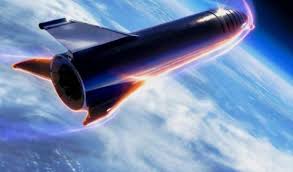
Breaking News
 Elon Tells Rogan the Real Reason Democrats are Prolonging the Government Shutdown [WATCH]
Elon Tells Rogan the Real Reason Democrats are Prolonging the Government Shutdown [WATCH]
 Newsom: Trump Is Trying to Rig the Election -- He Knows GOP Will Lose
Newsom: Trump Is Trying to Rig the Election -- He Knows GOP Will Lose
 There is zero justification for the Department of Justice's silence while the most serious...
There is zero justification for the Department of Justice's silence while the most serious...
 Gabbard Says Trump Has Ended America's Era Of 'Regime Change'
Gabbard Says Trump Has Ended America's Era Of 'Regime Change'
Top Tech News
 Graphene Dream Becomes a Reality as Miracle Material Enters Production for Better Chips, Batteries
Graphene Dream Becomes a Reality as Miracle Material Enters Production for Better Chips, Batteries
 Virtual Fencing May Allow Thousands More Cattle to Be Ranched on Land Rather Than in Barns
Virtual Fencing May Allow Thousands More Cattle to Be Ranched on Land Rather Than in Barns
 Prominent Personalities Sign Letter Seeking Ban On 'Development Of Superintelligence'
Prominent Personalities Sign Letter Seeking Ban On 'Development Of Superintelligence'
 Why 'Mirror Life' Is Causing Some Genetic Scientists To Freak Out
Why 'Mirror Life' Is Causing Some Genetic Scientists To Freak Out
 Retina e-paper promises screens 'visually indistinguishable from reality'
Retina e-paper promises screens 'visually indistinguishable from reality'
 Scientists baffled as interstellar visitor appears to reverse thrust before vanishing behind the sun
Scientists baffled as interstellar visitor appears to reverse thrust before vanishing behind the sun
 Future of Satellite of Direct to Cellphone
Future of Satellite of Direct to Cellphone
 Amazon goes nuclear with new modular reactor plant
Amazon goes nuclear with new modular reactor plant
 China Is Making 800-Mile EV Batteries. Here's Why America Can't Have Them
China Is Making 800-Mile EV Batteries. Here's Why America Can't Have Them
Mass Production Rate and SpaceX Starship Costs

Space X started construction on two Starship prototypes in the month of May. SpaceX has a goal of producing two Starships every week in 2021. This would be 100 Starships built in 2021.
The estimated salary, benefits and overhead would be an estimated an average annual cost $200,000 for each SpaceX employees. This means that the 3,000 employees building Super Heavy Starships would be $600 million per year. If there were 100 Starship built each year and 20 Super Heavy Boosters, then each Starship would have about $4 million in labor and each Super Heavy booster would have about $10 million in labor. If the production rate was halved and the staff levels were the same then the labor for Starship would be $8 million and the Super Heavy booster would be $20 million. SpaceX is four times slower of the goal at the two per month construction rate. The labor for each Starship would be $16 million and the Super Heavy booster would be $40 million. SpaceX has not hired all 3000 staff at this point.
The steel is about $200 per kilogram. The dry mass of the Starship will be about 120 tons and the Super Heavy Booster will be about 300 tons. This would be $2.4 million for the Starship if most of the material was the steel alloy. The Super Heavy would be $6 million of steel.
If the steel and salaries are half of the total cost of the rockets then the unit costs at different production levels would be:
Two Starships per month would mean $37 million per Starship
One Starship per week would mean $21 million per Starship
Two Starship per week would mean $13 million per Starship

 China Innovates: Transforming Sand into Paper
China Innovates: Transforming Sand into Paper

